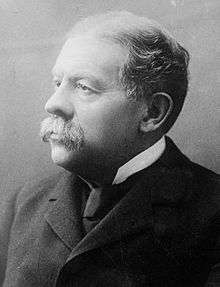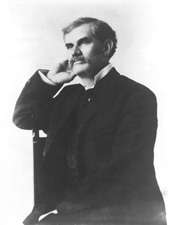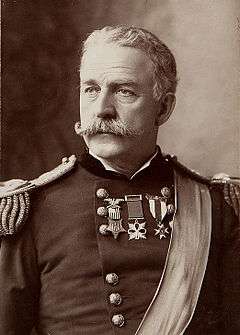1904 Democratic National Convention
|
1904 presidential election | |
|
Nominees Parker and Davis | |
| City | St. Louis, Missouri |
|---|---|
| Venue | St. Louis Exposition and Music Hall |
| Candidates | |
| Presidential nominee | Alton B. Parker of New York |
| Vice Presidential nominee | Henry G. Davis of West Virginia |
The 1904 Democratic National Convention was a United States presidential nominating convention that took place during the 1904 World's Fair and the 1904 Summer Olympics in the Coliseum of the St. Louis Exposition and Music Hall in St. Louis, Missouri. The convention nominated Alton B. Parker of New York for President and Henry G. Davis of West Virginia for Vice President. The ticket lost the 1904 presidential election to the Republican Party ticket of Theodore Roosevelt and Charles W. Fairbanks.
Convention
After the second straight defeat of Democratic presidential nominee William Jennings Bryan in the 1900 presidential election, the conservative allies of President Grover Cleveland regained power within the party.[1] However, with the popularity of President Theodore Roosevelt, many of the most prominent Democrats, such as Cleveland and former Attorney General Richard Olney, refused to run.[1] Additionally, Maryland Senator Arthur Pue Gorman alienated many in the South by opposing Roosevelt's policies in Panama.[1] In this atmosphere, conservative Democrats coalesced around New York Court of Appeals Judge Alton B. Parker, an ally of former New York Governor David B. Hill.[1] Parker hoped to one day sit on the United States Supreme Court, but Parker was convinced to run for president by Hill and was backed by business interests.[1] Over the objections of Bryan, Parker defeated former New York Congressman William Randolph Hearst on the first ballot.[1] In a further defeat for Bryan, the Democrats adopted a conservative platform far different from the policies espoused in 1896 and 1900.[2] However, Bryan would re-take control of the party in the 1908 Democratic National Convention.
Presidential candidates
| Presidential ballot | |||
| First before shifts | First after shifts | Unanimous | |
|---|---|---|---|
| Alton B. Parker | 658 | 679 | 1,000 |
| William Randolph Hearst | 200 | 181 | |
| Francis Cockrell | 42 | 42 | |
| Richard Olney | 38 | 38 | |
| Edward C. Wall | 27 | 27 | |
| George Gray | 12 | 12 | |
| John Sharp Williams | 8 | 8 | |
| Robert E. Pattison | 4 | 4 | |
| George B. McClellan, Jr. | 3 | 3 | |
| Nelson A. Miles | 3 | 3 | |
| Charles A. Towne | 2 | 2 | |
| Arthur Pue Gorman | 2 | 0 | |
| Bird S. Coler | 1 | 1 | |
Vice presidential spot
With the presidential slot being given to a nonentity with no hope of election, the second spot was worth even less. Nonetheless, several minor politicians put their names forward, and former Senator Henry Davis, who was extremely rich and at 80, very old, was given the honor in the hope he would donate some of his great wealth to the campaign. He did not. Prior to the nomination, numerous names were mentioned as potential running mates, including businessman Marshall Field of Illinois, former Congressman John C. Black of Illinois, John R. Williams of Illinois, attorney John W. Kern of Indiana, Edward C. Wall of Wisconsin, David Bost of Wisconsin, Governor Alexander Monroe Dockery of Missouri, and attorney Joseph W. Folk of Missouri.[2]
Vice presidential candidates
| Vice presidential ballot | |||
| First | Unanimous | ||
|---|---|---|---|
| Henry G. Davis | 644 | 1,000 | |
| James R. Williams | 165 | ||
| George Turner | 100 | ||
| William A. Harris | 58 | ||
| Blank | 33 | ||
See also
References
- 1 2 3 4 5 6 Kennedy, Robert C. "Citizen Parker". New York Times. Retrieved 8 October 2015.
- 1 2 "Bryan Crushed in Test of Strength". New York Times. 8 July 1904. Retrieved 8 October 2015.
External links
- Official report of the proceedings of the Democratic national convention held in St. Louis, Mo., July 6, 7, 8, and 9, 1904
- Democratic Party Platform of 1904 at The American Presidency Project
| Preceded by 1900 |
Democratic National Conventions | Succeeded by 1908 |










.jpg)
